Test Your PAST* Quotient
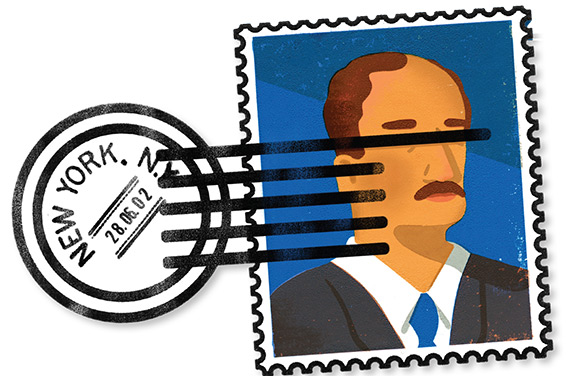
1. Which of these individuals was not depicted on a postage stamp?
____ Virginia Apgar
____ Charles Drew
____ Walker Percy
____ Edward Trudeau
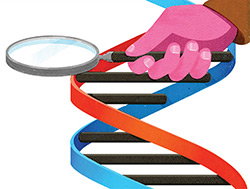
2. For whom are these eponyms associated?
Crohn’s disease
Apgar Score
The Whipple procedure
Huntington disease
Goldman Index
Drew Medical School
Jacobi Medical Center
Quimby rules
Chargaff rules
3. Which of these individuals was not among the first faculty members of Columbia’s medical school?
____ Samuel Clossy
____ Peter Middleton
____ John Jones
____ James Smith
____ David Hosack
____ John Tennent
____ Samuel Bard
4. Which of these individuals did not lead an institute or center at the National Institutes of Health?
____ Harold Varmus
____ Donald Lindberg
____ Herbert Pardes
____ Gerald Fischbach
____ Joshua Gordon
____ Audrey Penn
____ Robert N. Butler
____ Richard Masland
5. Match the years in which these advancements in medical training were instituted at P&S:
| entrance examinations | 1770 |
| written final examinations | 1911 |
| integration with a teaching hospital | 1841 |
| college clinic | 1888 |
| instruction in physiology | 1880 |
| first MD awarded | 1811 |
6. Disputes in the early 1820s among the P&S faculty over standards for medical education led to which of the following:
____ a duel
____ the wholesale resignation of the P&S faculty
____ a riot outside the doors of New York Hospital
7. Name the women who match these firsts:
|
First full professor at P&S First chair of a clinical department at P&S First chair of a basic science department at P&S First African-American female graduate First woman to intern in surgery at Presbyterian Hospital First woman to be chief resident in medicine at Presbyterian Hospital First woman to graduate from P&S |
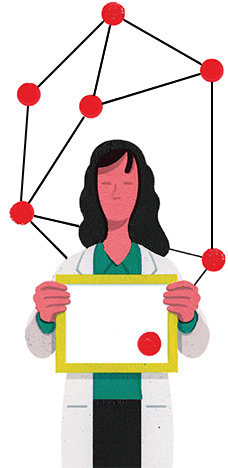 |
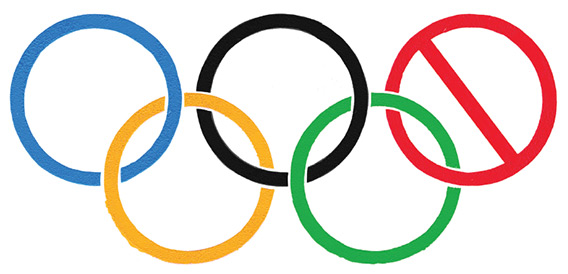
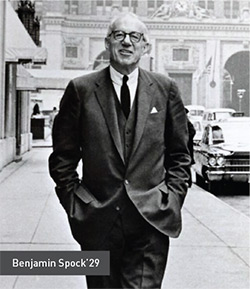
8. Which of these individuals did not compete in an Olympics?
____ Benjamin Spock’29
____ John Lattimer’38
____ Stephen Rerych’75
____ Jennifer Thompson’06
____ Valeria Silva Merea’12
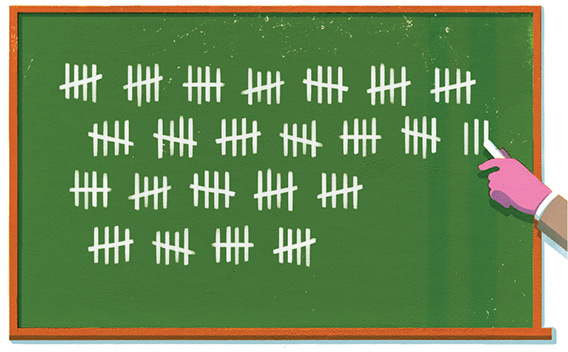
9. How many individuals have served in the role of dean (or equivalent) since 1767?
____ 15
____ 23
____ 25
____ 41
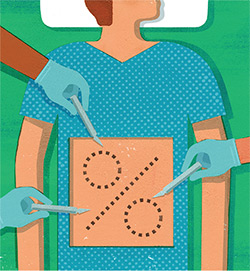
10. What is the five-year survival rate for people with pancreatic cancer who undergo the Whipple procedure?
____ 6 percent
____ 20 percent
____ 25 percent
11. Which class had a role in the beginning of the residency match system?
____ 1949
____ 1952
____ 1953
____ 1960
12. Which of these individuals
has not been a special guest at the medical center?
____ Bob Hope
____ Mister Rogers
____ Ann Landers
____ Alan Alda
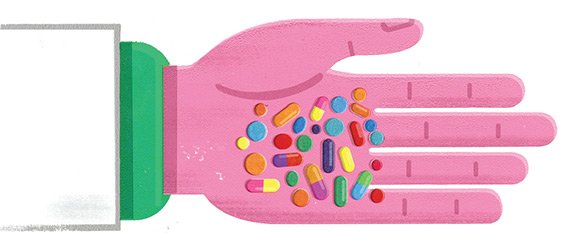
13. Match these medications with the Columbia researchers credited with the science that made the drugs possible:
| Bacitracin | Hattie Alexander |
| Rhogam | Laszlo Z. Bito |
| tPa | Balbina Johnson and Frank Meleney |
| Xalatan/latanoprost | Tracy Putnam and H. Houston Merritt |
| Dilantin | Sherie Morrison |
| Meningitis treatment | Richard Axel and Saul Silverstein |
| ReoPro and Remicade | John Gorman and Vincent Freda |
| 14. Match the names of these P&S scientists or alumni with the year in which they were awarded Nobel Prizes: | ||
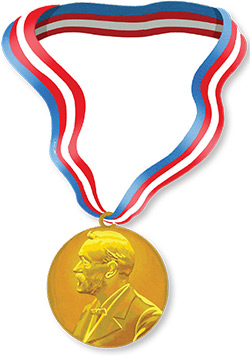 |
1956 | Richard Axel & Linda Buck |
| 1976 | Baruch Blumberg’51 | |
| 1989 | Andre Cournand & Dickinson W. Richards’1923 | |
| 1990 | Eric Kandel | |
| 2000 | Robert Lefkowitz’66 | |
| 2004 | E. Donnall Thomas | |
| 2012 | Harold Varmus’66 | |
15. What innovation allowed longtime P&S Professor of Ophthalmology Ramon Castroviejo to perform the first successful human corneal transplant in 1933?
____ creating a rectangular rather than circular “window” in the cornea
____ development of techniques to preserve corneas for transplant
____ discovery of hyaluronic acid and its molecular structure
The Answers
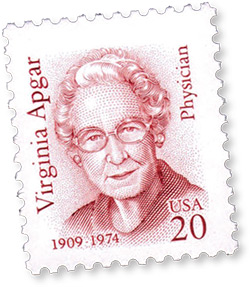
1.
Novelist Walker Percy (“The Moviegoer”) is the answer. Virginia Apgar’33, who developed the Apgar score still used to assess newborn health, was featured on a 20-cent stamp in 1994. Charles Drew’40 Med ScD, a pioneer of blood banking, was featured on a 35-cent stamp issued in 1981. Edward Trudeau’1871 was featured on a 76-cent stamp issued in 2008.
2.
Burrill Crohn’1907
Virginia Apgar’1933
Allen O. Whipple’1908
George Huntington’1871
Lee Goldman (current dean)
Charles Drew’1940 Med ScD
Abraham Jacobi (faculty member, 1870-1902)
Edith Quimby (faculty member, 1942-1960)
Erwin Chargaff (faculty member, 1935-2002)
3.
David Hosack was not among the faculty when Columbia’s medical school opened in 1767. Dr. Hosack was one of the original faculty members in the independent College of Physicians and Surgeons that opened in 1807.
4.
They all did—or do, in the case of Joshua Gordon. A psychiatry faculty member since 2004, Dr. Gordon became director of the National Institute of Mental Health in 2016. Harold Varmus’66, at different times, directed the NIH and the National Cancer Institute. Donald Lindberg’58 directed the National Library of Medicine for 31 years. Herbert Pardes directed the National Institute of Mental Health before joining P&S in 1984 to chair psychiatry (later becoming dean of P&S). Gerald Fischbach was director of the National Institute of Neurological Disorders and Stroke before becoming dean in 2001. Audrey Penn’60, professor emeritus of neurology, was acting director of the National Institute of Neurological Disorders and Stroke during two periods (January to July 1998 and 2001-2003). The late Robert Butler’53 was founding director of the National Institute on Aging. Richard Masland was director of the National Institute of Neurological Disorders and Stroke until 1968, when he became professor and chair of neurology at P&S.
5.
First MD: 1770, by the Medical School at King’s College, which closed during the Revolutionary War and reopened in 1784 as Columbia College
Instruction in physiology: 1811, under the purview of John Augustine Smith, recipient of an honorary MD from P&S and president of the College from 1831-1843
College clinic: 1841, Willard Parker, MD, professor of surgery, brought patients to the school so students could witness diagnosis and treatment; on occasion, treatment included minor surgery; in 1843, the program was expanded to include women and children patients
Written final examinations: 1880; degree
candidates were required to pass exams in all seven departments of the college: anatomy, physiology, chemistry, materia medica, obstetrics, surgery, and practical medicine
Entrance examinations: 1888, to demonstrate proficiency in English, Latin, arithmetic,
algebra, and geometry. In the same year, the course of study was expanded to eight-and-a-half months annually for three years.
Teaching hospital: 1911, when Columbia and Presbyterian Hospital signed an agreement to form a medical center in which the medical school and the teaching hospital would share land donated to build a new medical center. Columbia-Presbyterian Medical Center did not open until 1928, but Columbia started appointing hospital professional staff as soon as the 1911 agreement was signed.
6.
The answer is a mass resignation of the faculty. Disputes among faculty and the school’s trustees over the cost and quality of medical education at P&S culminated in 1826 with
the resignation of President Wright Post, MD, who left with the entire faculty, taking their equipment and supplies and most of the student body. They established what would become Rutgers Medical College. The trustees then appointed Professor John Watts, MD, to lead P&S. David Hosack, MD, former chair of obstetrics and the diseases of women and children and an instigator of the faculty insurrection, challenged Dr. Watts to a duel over the dispute. The duel was narrowly averted when Dr. Watts publicly apologized for his role in Dr. Post’s resignation. Though duels were common practice in New York at the time, the state legislature banned the practice a year after Hosack had challenged Watts. The riot happened 38 years earlier, in 1788, when a mob formed outside New York Hospital (a section had remained open after a fire damaged much of the hospital) to protest the illicit procurement of bodies from local graveyards for physicians who gave private anatomical instruction.
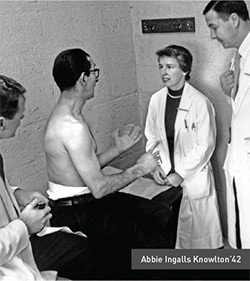
7.
First full professor at P&S (in 1949)
Virginia Apgar’33, Anesthesiology
First chair of a clinical department at P&S
(in 1995) Margaret Wood, Anesthesiology
First chair of a basic science department at P&S
Lucille Shapiro, chair of microbiology from 1986 to 1989
First African-American female graduate
Agnes O. Griffin’23
First woman to intern in surgery at Presbyterian Hospital
Virginia Kneeland Frantz’22
First woman to be chief resident in medicine at Presbyterian Hospital
Abbie Ingalls Knowlton’42
First woman to graduate from P&S
The first class of women (11 in all) entered in 1917. The first to graduate, in 1921, were Emma Corwin (ranked No. 5 in the class), Dorothea Curnow, Susanna Haigh (ranked No. 3 in the class), Elizabeth Hubbard, May Mayers, Gulli Lindh Muller (ranked No. 1 in the class), and Elizabeth Wright. Drs. Lindh Muller and Corwin were the first women to intern at Presbyterian Hospital on 70th Street. Dr. Lindh Muller is credited with opening the doors of P&S to women. She and the dean of Barnard lobbied Samuel Lambert, P&S dean, who was adamant that women should not be admitted. Among his objections: no suitable rooms and the need for changes in plumbing. However, he said that if $50,000 could be raised to make the improvements in the physical plant, he might consider accepting women. Dr. Lindh Muller contacted everyone she knew and collected a few hundred dollars. The Barnard dean collected a few thousand, but they were far from the goal. After further negotiations, Dr. Lambert relented and admitted 11 women. Soon after, according to Dr. Lindh Muller’s obituary, “a telegram came saying that an old gentleman in Texas would give the $50,000.” Shortly before the first women were to graduate in 1921, Columbia President Nicholas Murray Butler asked the dean at the time, William Darrach, for information about the first women to graduate and “the significance of this for the development of women’s part in medicine.” Dr. Darrach responded, “One striking thing has been their attitude towards special privileges; they have not only not asked for it but refused to accept it when it was offered.”
8.
Benjamin Spock won a gold medal in the 1924 Olympics in Paris as a member of the Yale crew team. Stephen Rerych won two gold medals for swimming at the 1968 Summer Olympics in Mexico City. Another swimmer, Jennifer Thompson, is one of the most decorated Olympians in history. She won 12 medals, including eight gold medals, in the 1992, 1996, 2000, and 2004 Summer Olympics. Also a swimmer, Valeria Silva Merea competed for her native Peru in the 2004 Olympics in Greece and the 2008 Olympics in Beijing. John Lattimer was a noted athlete, but he did not compete in an Olympics; after he died, his daughter found a letter inviting him to the 1936 Olympics, an invitation he apparently turned down to continue his studies at P&S.
9.
The answer is 23. That count includes interim deans and medical school leaders who had other titles, such as president, a title the College of Physicians and Surgeons that opened in 1807 used instead of dean.
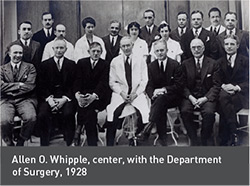
10.
The answer is 25 percent. Also known as pancreaticoduodenectomy, the Whipple procedure is named for Allen Whipple’1908, a professor of surgery at P&S from 1921 to 1946. In 1935, Dr. Whipple became the first American to perform the operation, in which a surgeon removes the head of the pancreas, as well as the duodenum, a portion of the common bile duct, gallbladder, and sometimes part of the stomach, and then reconnects the remaining intestine, bile duct, and pancreas. Only 20 percent of people with pancreatic cancer are eligible for the Whipple procedure, which boosts their five-year survival rate from just
6 percent to 25 percent.
11.
The Class of 1952 was the first to participate in the National Resident Matching Program for appointments to medical residencies. The class not only participated in “The Match”; it also played a leading role in improving it before it started. The match program was created to replace an unregulated process by which hospitals recruited the best graduates as interns with methods that sometimes included bribery. Before the match program was developed, some hospitals sought commitments from students as early as their second year of medical school. The class felt the original computer matching program gave hospitals an edge over the interns. Said Jack G. Shiller’52 in an article in the Winter 1985 issue of this magazine: “Certain troublemakers from Harvard, P&S, and Hopkins met, went back to their schools, raised funds ... and sent a long telegram to the president of the graduating class of every medical school in the country. As a result of this effort, a meeting was held in Bard Hall attended by representatives of every medical school, the deans of many major medical schools, and representatives of the American Hospital Association, the Matching Plan, and other interested organizations. The students threatened to boycott the program unless the officials attended the meeting.” After that meeting, the program was changed so that a graduate would match with the hospital highest on his or her preference list that offered that student an internship.
12.
The answer: Mister Rogers has not been a special guest (as far as we can tell). At the 50th anniversary of the Edward S. Harkness Eye Institute in 1984, Bob Hope was given an honorary Doctor of Humane Letters degree. Ann Landers (real name Eppie Lederer) received an award in 1992 from the Columbia-Presbyterian Health Sciences Advisory Council. Alan Alda delivered the P&S graduation speech in 1979, a speech that is still occasionally requested.
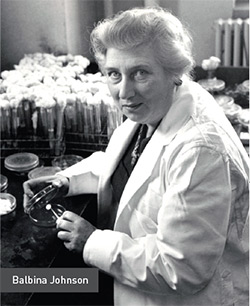
13.
Bacitracin: Balbina Johnson and Frank Meleney
Rhogam: John Gorman and Vincent Freda
tPa: Richard Axel and Saul Silverstein
Xalatan: Laszlo Z. Bito
Dilantin: Tracy Putnam and H. Houston Merritt
Meningitis treatment: Hattie Alexander
ReoPro and Remicade: Sherie Morrison
14.
1956, Physiology or Medicine: Andre Cournand and Dickinson W. Richards’23 (and Werner Forssmann) “for their discoveries concerning heart catheterization and pathological changes in the circulatory system”
1976, Physiology or Medicine: Baruch Blumberg’51 (and D. Carleton Gajdusek) “for their discoveries concerning new mechanisms for the origin and dissemination of infectious diseases”
1989, Physiology or Medicine: Harold E. Varmus’66 (and J. Michael Bishop) “for their discovery of the cellular origin of retroviral oncogenes”
1990, Physiology or Medicine: Former physician-in-chief at the Mary Bassett Imogene Hospital in Cooperstown, E. Donnall Thomas, (and Joseph Murray) “for their discoveries concerning organ and cell transplantation in the treatment of human disease”
2000, Physiology or Medicine: University Professor Eric Kandel (and Arvid Carlsson and Peter Greengard) “for their discoveries concerning signal transduction in the nervous system”
2004, Physiology or Medicine: University Professor Richard Axel and former postdoc Linda Buck “for their discoveries of odorant receptors and the organization of the olfactory system”
2012, Chemistry: Robert Lefkowitz’66 (and Brian Kobilka) “for studies of G-protein-coupled receptors”
15.
The answer is a rectangular incision. Spanish emigré Ramon Castroviejo, MD, described his 1935 corneal transplant, perfected at Columbia-Presbyterian, at the 1937 American College of Surgeons meeting in Chicago. His talk detailed how the edges of his rectangular incisions could be fitted better to merge with and become a living part of the rest of the eye. The following year, Dr. Castroviejo launched a campaign urging Americans to will their eyes to science, leading to the creation of present-day eye banks. Biochemist Karl Meyer discovered hyaluronic acid in 1935, two years after he joined the Department of Ophthalmology as a German refugee. His body of work was recognized in 1956 with the Lasker Award. Japanese ophthalmologist Dr. Saiichi Mishima spent three years at P&S in the late 1960s; his research at the time, investigating the corneal endothelium and its pump function, yielded vital techniques for enhanced preservation of donated corneas.
- Log in to post comments


